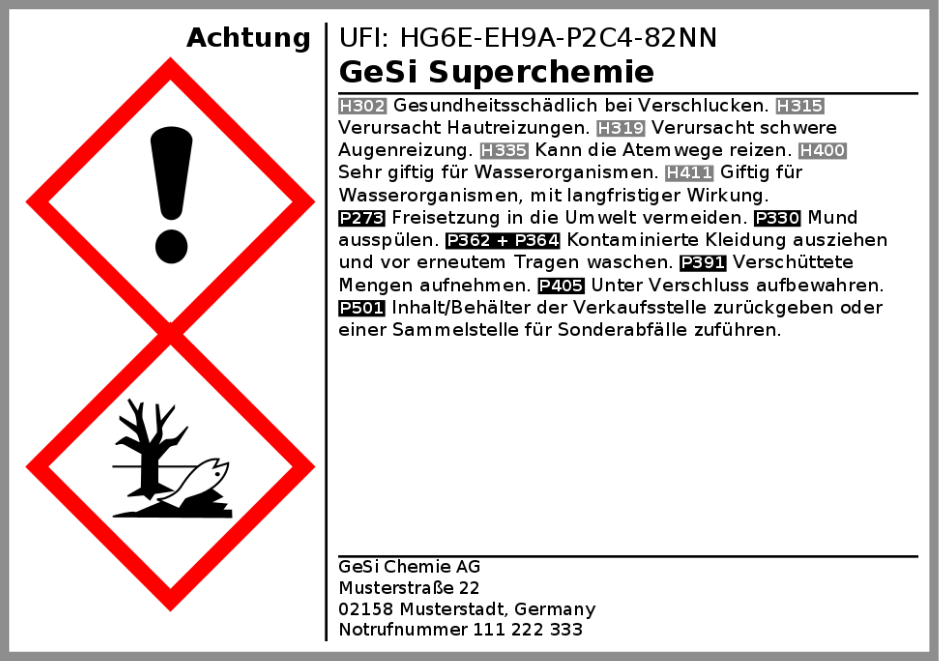Safety notes for products
The indication of P statements, or safety notes, follows fixed rules from the CLP Regulation. It is of particular interest which P statements are displayed with which additional notes in section 2.2 of the safety data sheet and thus also on the hazardous substance label.
Number of P statements
There are usually up to six hazard warnings on the identification label, which is no coincidence. While Article 22 in the CLP Regulation generally specifies which safety notes apply and when, Article 28 (rules of precedence) specifies the maximum number and under which conditions P statements can be omitted.
Rules of precedence for P statements
Consequently, the rules of precedence for safety notes can be summarized as follows:
- When supplied to the general public, information on disposal of the product and packaging is required (P501), unless there is no hazard to humans or the environment.
- If certain P statements proposed for the hazards are redundant or unnecessary, they should be omitted.
- In view of the circle of users, no more than six P statements should appear on the identification label. Exception: it is believed that more P statements are needed because of the nature and severity of the hazards.
But what about combination phrases, such as P231+P232? Do these count as two phrases or one?
P statement combinations
According to Annex IV of the CLP Regulation, you can combine P statements in any way the manufacturer deems appropriate. You will also find certain selected examples in Annex IV. Accordingly, a P statement combination then counts as a single P statement for the label.
Supplementary information in P statements
Have you received identification labels or safety data sheets with P statements that look like they should still be filled in? Two examples:
P280 protective gloves/protective clothing/eye protection/face protection/hearing protection/….
P501 Supply of contents/container ….
These P statements do not just look like that, they should actually be tailored to the product and its use. How you can vary P statements and add content is described in detail for each P statement in Annex IV (list of safety notes) of the CLP Regulation. For the two examples, this means that the exact, recommended protective clothing should be specified. The same applies to the contents and containers, in addition to the information on how and where they should be disposed of.
Sources:
[1] CLP Regulation No. 1272/2008, consolidated version

